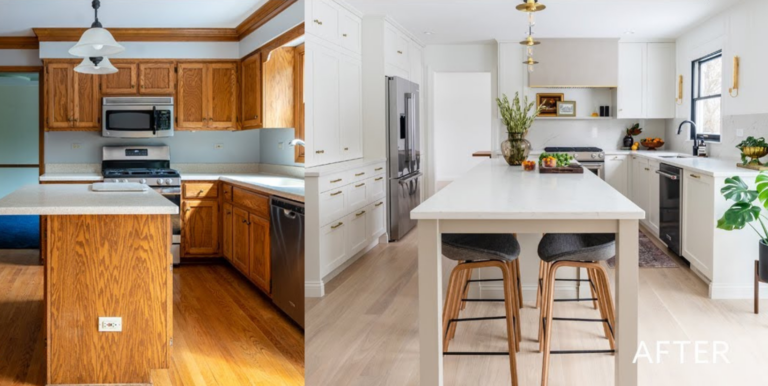Reverse Mortgage vs HELOC: Which is Best for Tapping Into Your Home Equity?
Reverse Mortgage vs HELOC | When it comes to tapping into your home equity, there are a few options available, but two popular ones are reverse mortgages and HELOCs. While both options allow you to access the equity in your home, there are some key differences to consider. In this article, we will compare reverse mortgages and HELOCs and help you determine which one is the best option for your needs. Reverse Mortgages vs. HELOC
Reverse Mortgage vs. HELOC
Understanding Home Equity
Before we look closer at reverse mortgages vs. HELOCs, it’s essential to understand what home equity is. Home equity refers to the amount of your home that you own outright. It’s calculated by subtracting any outstanding mortgage debt from the current market value of your home.
For example, if your home is worth $500,000, and you still owe $300,000 on your mortgage, your home equity is $200,000. This is the amount of money that you could potentially access through a reverse mortgage or HELOC.
What is a Reverse Mortgage?
A reverse mortgage is a type of loan that allows homeowners who are 62 years or older to borrow money against the equity in their home. Unlike traditional mortgages, where you make monthly payments to the lender, with a reverse mortgage, the lender makes payments to you.
Types of Reverse Mortgages
There are three types of reverse mortgages available:
- Single-Purpose Reverse Mortgage: This type of reverse mortgage is typically offered by state or local government agencies or non-profit organizations. The funds can only be used for a specific purpose, such as home repairs or property taxes.
- Home Equity Conversion Mortgage (HECM): This is the most popular type of reverse mortgage and is backed by the federal government. HECMs can be used for any purpose and have more flexible eligibility requirements than other types of reverse mortgages.
- Proprietary Reverse Mortgage: This type of reverse mortgage is offered by private lenders and has unique eligibility requirements and loan terms.
How a Reverse Mortgage Works
With a reverse mortgage, the lender makes payments to you, either in a lump sum, monthly payments, or as a line of credit. The loan does not have to be repaid until you sell the home, move out, or pass away. However, you are still responsible for paying property taxes, homeowners insurance, and maintaining the home.
The amount of money you can borrow with a reverse mortgage depends on several factors, such as your age, the value of your home, and current interest rates. The older you are and the more equity you have in your home, the more money you can borrow.
What is a HELOC?
A HELOC, or Home Equity Line of Credit, is a type of revolving credit that allows you to borrow money against the equity in your home. Like a credit card, you have a set credit limit and can borrow money as needed up to that limit.
How a HELOC Works
With a HELOC, you can access funds by writing a check or using a debit card tied to the credit line. You can borrow as much or as little as you need, and you only pay interest on the amount you borrow. The repayment terms vary, but typically, you have a draw period where you can borrow money, followed by a repayment period where you must pay back the money you borrowed, plus interest.
Reverse Mortgage vs HELOC: Comparison
Now that we understand the basics of reverse mortgages and HELOCs let’s compare the two options to help you determine which one is the best for you.
Repayment
One of the most significant differences between reverse mortgages and HELOCs is the repayment. With a reverse mortgage, you don’t have to make any payments until you move out of the home, sell it, or pass away. In contrast, with a HELOC, you must make payments on the interest and principal during the repayment period.
Interest Rates and Fees
Both reverse mortgages and HELOCs have fees and interest rates associated with them. Reverse mortgages typically have higher fees than HELOCs, and the interest rates can also be higher. However, reverse mortgages often have a fixed interest rate, while HELOCs usually have a variable interest rate.
Access to Funds
Reverse mortgages and HELOCs also differ in how you access the funds. With a reverse mortgage, you can receive the funds as a lump sum, monthly payments, or a line of credit. With a HELOC, you have access to a line of credit that you can draw from as needed.
Eligibility Requirements
To qualify for a reverse mortgage, you must be 62 years or older, and you must have significant equity in your home. HELOCs have less strict eligibility requirements, but you still need to have equity in your home and a good credit score.
Reverse Mortgage vs HELOC: Which One is Right for You?
Deciding between a reverse mortgage and HELOC depends on your unique situation. Here are a few factors to consider when making your decision:
Factors to Consider
- Your Age: If you are 62 years or older, a reverse mortgage may be a better option for you.
- Your Equity: If you have significant equity in your home, a reverse mortgage or HELOC could be a good way to access those funds.
- Your Payment Ability: If you have a steady income and can make payments, a HELOC may be a better option. If you prefer not to make payments, a reverse mortgage may be a better option.
Pros and Cons:
Reverse Mortgage Pros:
- No monthly payments required
- Funds can be received as a lump sum, monthly payments, or a line of credit
- Fixed interest rate options available
Reverse Mortgage Cons:
- Higher fees and interest rates
- Limited eligibility requirements
- Could reduce the equity in your home over time
HELOC Pros:
- Flexible borrowing options
- Lower fees and interest rates
- Can help improve your credit score
HELOC Cons:
- Requires payments during the repayment period
- Can be a variable interest rate
- Could put your home at risk if you can’t make payments
Reverse Mortgage vs HELOC: Conclusion
Reverse mortgages and HELOCs are two popular options for tapping into your home equity. Both have their pros and cons, and the right option for you depends on your unique situation. Consider your age, equity, and ability to make payments when making your decision. Your mortgage lender can help you get started.
FAQs
- What is a reverse mortgage? A reverse mortgage is a type of loan that allows homeowners who are 62 years or older to borrow money against the equity in their home.
- What is a HELOC? A HELOC, or Home Equity Line of Credit, is a type of revolving credit that allows you to borrow money against the equity in your home.
- Can you lose your home with a reverse mortgage? Yes, if you don’t meet the repayment requirements of a reverse mortgage, you could lose your home.
- How much can I borrow with a reverse mortgage? The amount you can borrow with a reverse mortgage depends on several factors, such as your age, the value of your home, and current interest rates.
- How do I repay a HELOC? During the repayment period of a HELOC, you must make payments on the interest and principal. You can make payments by check, online, or automatic withdrawal.



